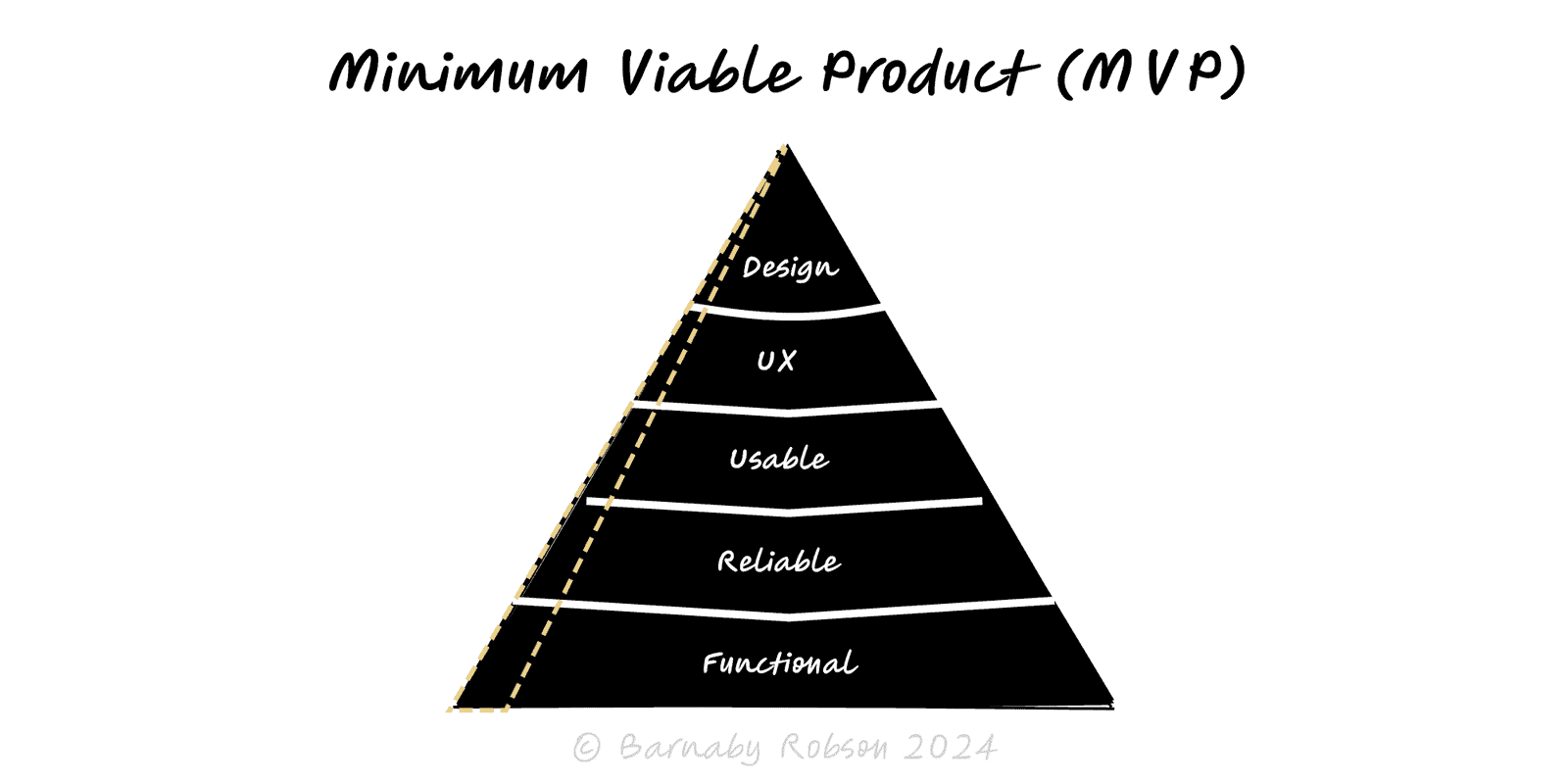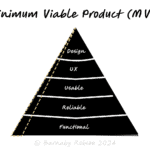Minimum Viable Product
Eric Ries (Lean Startup); antecedents in Steve Blank’s customer development

An MVP is not a scrappy V1; it’s an experiment designed to maximise learning per unit time/cash. You identify the assumptions that could break the idea (value, growth, feasibility, viability), pick the fastest ethical test, and read clear metrics to decide next steps. Forms range from simple smoke tests to concierge or wizard-of-oz trials before writing full software.
Riskiest Assumption (RAT) – value, demand, acquisition, monetisation, feasibility, or legality—test the one that can kill you first.
MVP formats (choose to fit the risk)
- Landing page / fake door (register interest, pre-orders).
- Concierge (deliver manually to a few customers).
- Wizard-of-oz (front-end real, back-end manual).
- Prototype/video (show, then measure intent).
- Single-feature slice (only the core job).
- Marketplace bootstrap (hand-curated supply/demand).
Build–Measure–Learn loop – specify a prediction, a metric, and a threshold before you build.
Decision rules – pass → scale/iterate; borderline → refine and re-test; fail → pivot or stop.
New venture or product line – validate demand and WTP before full build.
Major features/price changes – test impact with a gated cohort.
Hardware/services – “pretotype” with videos, deposits, or manual fulfilment.
Marketplaces – prove both-sided pull with manual matching.
Write the hypothesis – For [segment], if we offer [job/value], then [behaviour] will occur.
Pick the single riskiest assumption – value, growth, feasibility, or viability (unit economics).
Choose MVP format – fastest ethical test that hits the chosen risk.
Pre-define success metrics – e.g., sign-up rate ≥ x%, pre-order conversion ≥ y%, day-7 retention ≥ z%, CAC/ARPU bounds.
Scope ruthlessly – remove anything not required to test the assumption; timebox (e.g., 1–2 weeks).
Recruit the right users – your target segment; avoid biased friends/fans only.
Run and measure – instrument events; collect qualitative notes at decision points.
Decide – persist (scale/expand), pivot (new segment, channel, or problem), or stop. Log what you learned.
Stage to MSP/MLP – once the bet is validated, harden into a Minimum Supportable/Lovable Product for durability.
MVP ≠ low-quality V1 – shipping half-baked core experiences burns trust; test the claim, not polish, unless polish is the claim.
No thresholds – without pre-set pass/fail lines you’ll rationalise any result.
Wrong audience – testing with non-buyers gives false negatives/positives.
Vanity metrics – pageviews and likes; prefer conversion, retention, WTP, unit economics.
Ethics & brand risk – fake doors: be transparent, capture interest, and follow up; don’t charge without fulfilment.
Scaling too soon – “success” on tiny samples can vanish; re-test on a larger cohort first.
